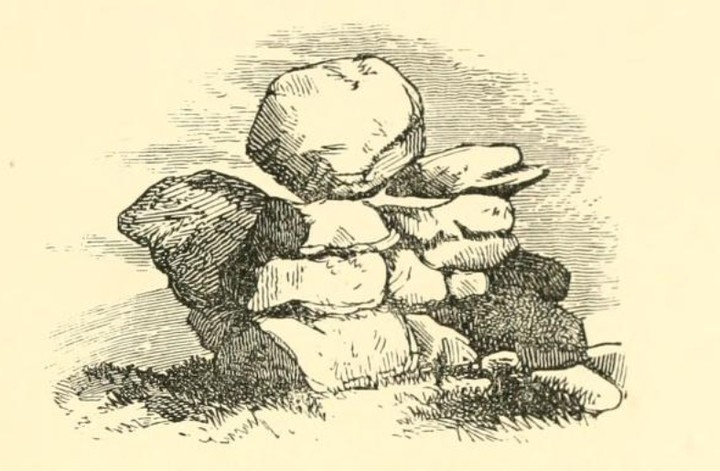My Curiosity having led me twice to Glastonbury within these two Years, and inquiring there into the Antiquity, History and Rarities of the Place, I was told by the Inn-keeper, where I set up my Horses,who rents a considerable Part of the Inclosure of the late dissolved Abbey, “That St. Joseph of Arimathaea landed not far from the Town, at a Place, where there was an Oak planted in memory of his landing, called the Oak of Avalon: That he and his Companions march’d thence to a Hill, near a Mile on the South side of the Town, and there being weary rested themselves, which gave the Hill the Name of Weary all Hill [...]”
and in the very Place where they rested there sprung up a miraculous Thorn Tree, which every Year at Christmas in the coldest Year and Weather, Frost, Snow or what ever else, never failed budding forth Leaves and Flowers [...]
The Holy Thorn of Glastonbury, mentioned [..] to bud and blow Yearly upon Christmas Day, grew on the South Ridge of Weary all Hill, at present called Werrall Park, a Ground now, or lately belonging to William Stroud, Esq. Whether it sprung from St. Joseph of Arimathaea’s dry Staff, stuck by him on the Ground, when he rested there, I cannot find; but, beyond all dispute, it sprung up miraculously.
It had two Trunks or Bodies till the Reign of Queen Elizabeth, in whose days a Saint like Puritan, taking offence at it, hewed down the biggest of the two Trunks, and had cut down the other Body in all likelyhood, had he not bin miraculously punished (saith my Author) by cutting his Leg, and one of the Chips flying up to his Head, which put out one of his eyes.
Though the trunk cut off was separated quite from the Root, excepting a little of the Bark, which stuck to the rest of the Body, and laid above the Ground above thirty years together; yet it still continued to flourish, as the other Part of it did which was left standing; and after this again, when it was quite taken away and cast into a Ditch, it flourished and budded as it used to do before. A Year after this, it was stolen away, not known by whom or whither; as many old Persons affirmed to Mr. Broughton, who went on purpose to Glastonbury to see this, and the other Curiosities and Antiquities of the Place.
The remaining Trunk and the Place where it grew Mr. Broughton describes, and says, “That it was as great as the ordinary Body of a man; That it was a Tree of that kind and species, in all natural respects, which we term a White Thorn; but it was so cut and mangled round about in the Bark, by engraving Peoples Names resorting thither to see it, that it was a wonder, how the Sap and Nutriment should be diffused from the Root to the Boughs and Branches therof, which were also so maimed and broken by Comers thither, that he wondred, how it could continue any Vegetation, or grow at all, yet the Arms and Boughs were spread and dilated, in a circular Manner, as far or farther, than other Trees, freed from such Impediments of like Proportion, bearing Hawes (Fruit of that kind) as fully and plentifully as others do. In a word, That the Blossoms of this Tree were such Curiosities beyond Seas, that the Bristol Merchants carried them into Foreign Parts; That it grew upon (or rather neer) the Top of an Hill, in a Pasture bare and naked of other Trees, and was a Shelter for Cattle feeding there, by reason whereof, the Pasture being great and the Cattle many, round about the Tree the Ground was bare and beaten as any Highway, Floor, or any continued trodden Place: yet this Trunk was likewise cut down by a Military Saint, as Mr. Andrew Paschal calls him, in the Rebellion which happened in King Charles the first’s time;
however, there are, at present, divers Trees from it by grafting and Inoculation preserved in the Town and Countrey adjacent. Amongst other Places, there is one in the Garden of a Currier named [blank] living in the principle Street; a second at the White Hart Inn; and a third in the Garden of William Strode, Esq. There is a Person about Glastonbury, who has a Nursery of them, who (Mr. Paschal tells us, he is informed) sells them for a Crown a peece, or as he can get.
Glastonbury also had a famous walnut tree, which always flourished for St Barnabas’s day, 11th June (details of this are on p112).














